The Spirit of Rockline
My Personal History with
Rockline & Modern Rock Live
Hello, I'm Doctor Chuck. I am a microscopic footnote in the whole history of rock 'n' roll. So, how did that happen? Well, it's thanks to the radio shows Rockline and Modern Rock Live. How did I get involved with them, and how is my history intertwined with theirs? Before I get to that, a little radio history is in order...
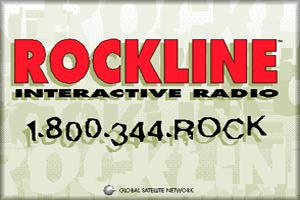
(Please don't call this phone number.)
Rockline was a live, call-in radio show, where the audience could talk to rock artists over the telephone. It started in 1981, on Monday nights at 8:30pm Pacific (11:30pm Eastern), and ran for over 33 years. The guest list read like a book of "Who's Who in Rock 'n' Roll." There were legends like George Harrison, Pete Townshend, and Rush. Also, there were metal gods, like Ozzy Osbourne, Judas Priest, and Metallica. As the 1980s turned into the 1990s, newcomers were featured, like the Smashing Pumpkins, Soundgarden, and Foo Fighters. In 1999, the show split into two nights, Monday and Wednesday, with the Monday show featuring mostly newer artists for "active rock" radio, and the Wednesday show with "classic rock" artists.
The show originated from Los Angeles, and was heard locally on 95.5 KLOS. The first host was B. Mitchel Reed, and his first guest was Joe Walsh. After six months, B. Mitchel Reed left the show (on March 16, 1983, he died due to a lingering heart condition). Bob Coburn, also known as "B.C.", then became the host, and his first guest was Rod Stewart. Bob Coburn held that position until the early 1990s. Following his departure, there were three other hosts over the next several years: Steve Downes, Beau Rials, and Riki Rachtman. On March 10, 1997, Bob Coburn returned to hosting duties, and eventually became the owner of the program in 2003. The show ceased broadcasting in December 2014. Bob Coburn died on December 17, 2016, after a long battle with lung cancer.
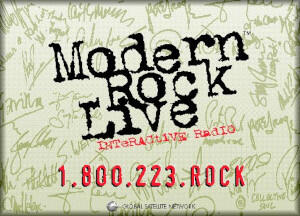
(Please don't call this phone number, either.)
Modern Rock Live was another live, call-in radio show. It featured artists of the alternative/modern rock genre, and coincided with the rise of the "alternative nation" in the 1990s. The show was created in 1991, hot on the heels of the breakthrough of Nirvana (who were on the show in early 1992). There were guests who were alt-rock pioneers in the 1980s, like Depeche Mode, Kate Bush, and Morrissey. Of course, there were also many newer artists, including Green Day, Weezer, and Alanis Morissette.
One of its first affiliates was 92.7 WDRE in Garden City, New York. From 1982 to 1987, they were known as WLIR, one of the forerunners of alternative and modern rock radio (and a station I gravitated towards to get away from crappy Top 40 radio). In December 1987, they turned into WDRE, and kept the music format in place.
Originally, Modern Rock Live was a 60-minute show, broadcast live on Monday nights at 11pm Eastern (8pm Pacific), hosted by Tom Calderone of WDRE. In 1994, it was purchased by Global Satellite Network, the parent company of Rockline, and moved to Tuesday nights. In 1995, it expanded to a 90-minute show on Sunday nights with a start time of 10:30pm Eastern (7:30pm Pacific). After Tom Calderone started working for VH1 in 1998, Max Tolkoff took over hosting duties, and would remain there until the show's final broadcast in November 2000.
Got all that? Good.
From the Beginning
It was 1985. Live Aid was the big event that year. Dire Straits was getting their money for nothing, and Aerosmith was doing it with mirrors. 92.3 K-Rock in New York City became a new affiliate of Rockline, a live, weekly, call-in radio show that let the audience interview rock musicians. I thought it was pretty cool. It was Mark Knopfler's 36th birthday, and I was still in high school.
Unfortunately, since the show was live from Los Angeles, it was on late every Monday night on the east coast. Plus, the local station didn't always do a good job of promoting the artists who were coming up that week, and I couldn't stay up late every week just to find out who was going to be on the show. Remember, this was way before social media existed, and the Internet wasn't part of the public conscious. You had radio, TV, newspapers, and magazines. That's it.
However, when I got to college, I was able to listen every week, partly because staying up late was a requirement of being a college student, but mostly because Rockline was one of the few shows that featured current and classic rock artists. During that time, I became quite attached to the show. I even tried calling in when they had Melissa Etheridge, but I failed in the attempt.
It was at this point that I met Tom Calderone, the future host of Modern Rock Live. Back in 1989, I was visiting 103.9 WRCN in Riverhead, and he was on his way out to... um... drive the prize van to a local mall. Yes, this is what he was doing, before he moved on to 92.7 WDRE, and became the host of this new syndicated radio show. He certainly paid his dues, didn't he?
That same year, I bought a Rockline t-shirt.
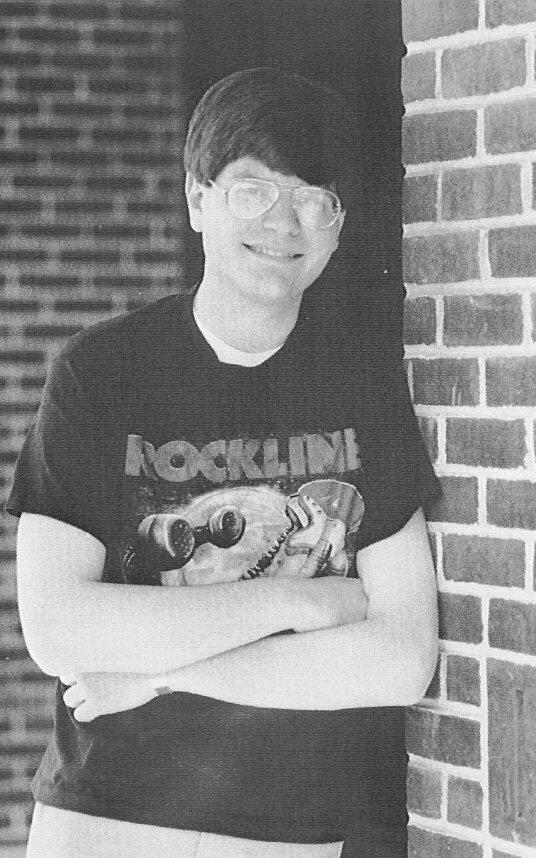
The Times They Are A-Changin'
In 1990, I graduated from college and moved on to graduate school. It was there I discovered the Internet, and learned how to use email and Usenet (basically, network-wide discussion groups). The interface was command-line and text-only, but I thought it was a great way to communicate, collaborate, and share information (and to meet girls, but I digress). On Usenet, there were many music-oriented discussion groups. People would talk about their favorite bands, and post news and rumors. There were some groups that had to do with radio and radio shows, but nobody was really posting about Rockline, unless a huge name was going to be on that week. I still had to rely on the local affiliate for that information (which was hit or miss, but a little more hit than miss).
A couple of years later, I was out of school, and found a mailing list where people posted about upcoming live radio performances, such as concerts and interviews. One guy was posting about upcoming guests on Modern Rock Live, but nobody was posting about Rockline. Both shows often had live performances in the studio. Since I was listening to Rockline weekly anyway, I started posting upcoming guest lists there. I also kept track of their affiliate list as well, simply from listening to the show. Mailing list members would ask me what station had the show, and I'd send the list. Sometimes I'd trade tapes of shows. It was fun posting on Tuesday what was just announced the previous night.
Message in a Bottle
I kept posting to the mailing list for about a year. In the meantime, the World Wide Web helped bring pictures and sound to the Internet, making it text-only no longer. This helped the Internet become more appealing to the general public. I had a rather clunky web browser called SlipKnot (no relation to the band of the same name), but it got me around on the web and helped me learn HTML. In November 1994, I created a personal website with the free storage I had with my Internet Service Provider. The Unofficial Rockline website was born. It featured the upcoming guest list and affiliate list, all without me having to mail anything (but I still posted updates to the mailing list). The site only had a few images, but the content was useful enough. Anybody in the world could view it at any time.
A couple of months later, Rockline and sister radio show Modern Rock Live, created an area for themselves on America Online (AOL). It had pictures and transcripts of AOL chats with the guests. The chats were held one hour prior to that night's program. I didn't have AOL, but...
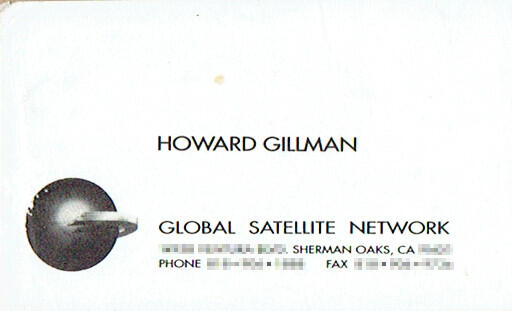
Towards the end of 1995, I got an email. It was completely unexpected, and nothing I could have anticipated. Howard Gillman, the producer of Rockline, had been checking out my website, and thought that I might be interested in helping maintain their area on AOL. I wasn't entirely sure what this would entail, or even how AOL content worked (I was still learning about HTML). However, this AOL area seemed like a cool idea, so I took it. I figured I could handle it... and my day job... and maintain my website... not to mention keep posting to the mailing list.
In January 1996, I had control over the AOL area of Rockline/Modern Rock Live. They sent me chat transcripts and pictures to post there. Below, you can see Gwen Stefani of No Doubt, and 311. Not bad for an early digital camera.
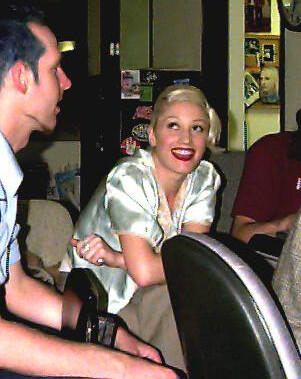
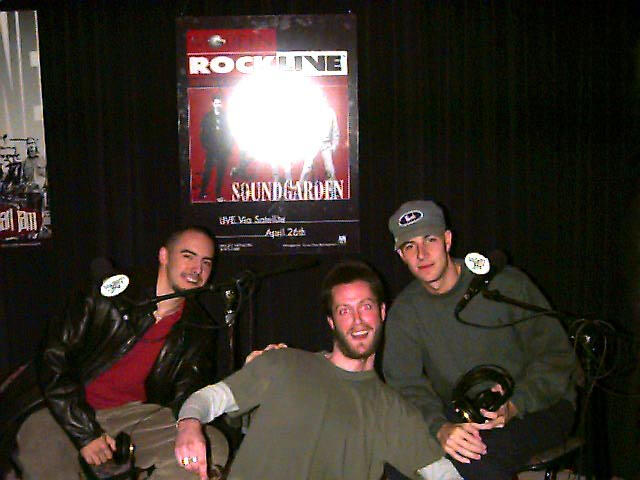
Dazed and Confused
Things were taking their toll on me. My responsibilities at work were getting rather intense, and my attention was very divided, so it was quite difficult to focus. I have never been able to thrive in a fast-paced environment.
My website was also getting neglected. It was hard to stay interested in the AOL area after having full access for a few months. Not only was there content that needed to be updated, but message boards had to be monitored, and emails needed to be answered (a lot of them). If I knew there was going to be this much to it, I might have reconsidered their original offer.
That summer, I got a phone call from one of the guys at AOL who noticed that the area had kind of gone downhill (to put it mildly). So, I told him that it was much more than I anticipated, and they went about finding a new maintainer. This left me free to concentrate on my day job, and give my website a bit more attention than it was getting.
I kept my unofficial Rockline site going. I still liked the show, and maintaining the site helped me learn more about HTML and other web-related technologies. Occasionally, I'd get an email from an AOL user about something on the site, and I'd ask them why they didn't use the Rockline area on AOL. Their reply? They liked mine better. Things like that gave me a little incentive to keep things going.
The AOL area closed sometime in 1997. That meant everyone, including the lawyers, was looking at my site again. I improved its appearance, expanded it, created a database of past guests, and added a message board where visitors could trade tapes with each other. Trade being the keyword here, sales were explicitly prohibited (lest someone might violate copyright laws, I was actually quite concerned about that).
Oh, I wasn't kidding about the lawyers. When Rockline was acquired by AMFM Radio Networks, a then-subsidiary of Chancellor Media, I got this email from producer Howard Gillman: "There has been quite a lot of conversation about you from Chancellor legal and execs. I think I have successfully convinced them to leave you alone. Your website is terrific. Much better than it used to be. Looks great. If you experience any problems with them, let me know. Hope all is well with you."
Ramble On
Music was changing. Actually, it had been changing ever since Nirvana released "Smells Like Teen Spirit." The early 1990s were an exciting time for music, particularly rock music, but by the end of the decade, music was evolving into... something else.
Rockline expanded to two nights in January 1999 in order to take advantage of the transforming radio landscape. Monday nights were for current artists, and Wednesday nights for classic rock acts. This change added a wrinkle of difficulty, as I had to keep up with two shows per week instead of one. By this time, I recognized only about half the guest names coming on the Monday show. I was still interested in new music, but I had no idea who Mushroomhead, Mudvayne, and Glassjaw were. At some point, I had no local station that carried the Monday show. However, there were people on the Internet willing to pitch in for the nights that I couldn't hear it. In the years 2000 and 2001, I even got a little help from the new staff at Rockline. They had no official site yet, but they would pass on guest lists and affiliate info to me, and I'd post it on the site. The staff, including Bob Coburn, loved the site.
For years, I wondered when Rockline would get around to putting up their own official site. In February 2002, I stopped wondering. That was when their official website went online. For the first time, I didn't have to listen to the show to find out who was coming up the following week, I could just... go to their website. With this new turn of events, was my site still needed? I had things they didn't have, like a message board and a list of frequently asked questions (FAQ). I actually hadn't planned on running my website this long, as it only started out as an HTML learning tool. Still, visitors continued to come to the site, so I kept it going. In fact, the site morphed from an unofficial site to an authorized fan site, as shown in this screenshot with Robert Plant.
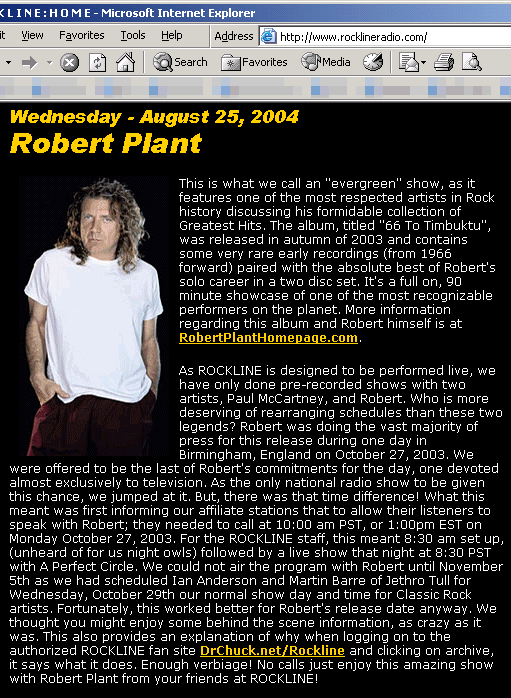
With the official site in full swing, I was no longer required to listen the show weekly, just to find out who was coming up the following week. I was also able to skip nights where I had already heard the show, or wasn't keenly interested in the band. That's when I started to think... why am I keeping my site going? I wasn't being as creative as I used to be with it, and I wasn't getting the same enjoyment I used to, either. I felt like I was "phoning it in." Copy/paste. I wanted to do something different, but I hadn't decided what that was going to be.
End of the Line
I started retiring various sections of my personal website in 2005, and got around to retiring the Rockline section that summer... over 10 years after I started the site... nearly 20 years since I first heard Rockline. Rather than let the content disappear, I sent the FAQ and database of past guests to the Rockline staff, in case they had a need for the data. My Rockline listening diminished as the summer turned to fall and winter, but I'd visit their site to check up on them, and see what was going on.
Years passed, and their site went through a few redesigns. They did get some use out of the guest database I had given them. I could tell they used it as a starting point for the "Archive History" section on their site. In those years, the Internet became far more ubiquitous than it was in the early 1990s. Napster came and went, and the Apple iPod was introduced. Both had an influence on the way we listen to and purchase music. Social media sprang up. Twitter, Facebook, and YouTube allowed celebrities to keep in touch with their fans, sometimes interacting with them directly. Modern Rock Live had already fallen by the wayside in November 2000, due to money issues and budget cuts, but could Rockline survive in these new, super-connected, highly interactive times?
In November 2014, Bob Coburn released this statement: "The world has changed from an innovative, unique idea back in 1981 to a one of near constant exposure for artists in 2014. With the Internet, Twitter accounts, hundreds of television channels and a more sophisticated press, artists are now literally at the fingertips of their fans. ROCKLINE is no longer the invaluable tool to connect fans with their Rock & Roll heroes, it has become but one of many. We have had the honor to present the history of Rock as told by the artists who created it for the past three decades-plus, but now is the time to pass the mantle. We will proudly present the very best of ROCKLINE until the end of the year when our mics will fall silent forever. Thanks for listening and long live Rock & Roll!"
Rockline broadcast its last show in December 2014. Two years later, on December 17, 2016, Bob Coburn died of lung cancer. 95.5 KLOS remembered the legacy of Bob Coburn and Rockline by broadcasting replays and tributes. A Facebook group named Tribute to Bob Coburn was created, bringing together fans from all over the globe. In 2022, he was posthumously inducted into the Radio Hall of Fame.
It's been a "long, strange trip," but what a trip it was. My contributions won't ever get mentioned in the rock 'n' roll history books, but I know what I've done. Now, you do too.
Remembering Bob Coburn
Bob Coburn will always be remembered as the voice of Rockline, and the
narrator of rock 'n' roll's story.
'Rockline' host Bob Coburn dies at 68, Los Angeles Times, December 16, 2016
Bob Coburn, Host of L.A. Radio Program 'Rockline,' Dies at 68, Billboard, December 18, 2016
Service Will Celebrate Life of Bob Coburn Jan. 21., Inside Radio, Jan 12, 2017
The Passing Of Rockline's Bob Coburn — The End Of An Era, Classics Du Jour, February 6, 2017
For a list of guests that have been on Rockline and Modern Rock Live, see the Unofficial Guest History.